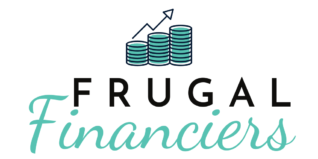
Doesn’t it always feel like we need more money? We could do this or buy that if only we could afford it.
Or maybe it’s more about just covering our basic living necessities. How are we going to pay our electricity bill this month?
Either situation, whether it be affording a want or necessity, leaves us feeling like we need more money.
And, don’t we always need more money?
This often leads us to think about how we can make more money.
Is there a way we can make more money at work? Maybe a promotion or raise or just picking up extra shifts?
If those options are not possible or you don’t even have a job, what do you do instead?
Maybe there’s some ideas online for ways to make more money?
There are definitely plenty of ways to make money online but as we’ve discussed, there are reasons why these fast and easy ways may not help you out in the long-run.
What if there was another way?
While making more money (regardless of how you do it) can help your financial situation, you likely will have to dedicate your time to generating the additional income.
More Money = More Time
If you are already working 40+ hours a week to make money, do you want to be dedicating even more time for easy cash that typically undervalues your time and capabilities?
So, let’s look at your financial situation and see if there are some other ways to find extra cash:
1. Calculate Your Income
The first thing you need to do is calculate how much money you’re making. We suggest that you do this over the last quarter but you can also do it over the last year, half year, or month.
Recurring Income
Are you on a salary or do you get paid hourly?
If you’re on a salary, its pretty easy to know how much money you’re making each time period.
Just take one pay stub and multiply the amount by the number of times you receive it during your time period.
Example:
Paid $1,378.90 every other week and 13 weeks in a quarter.
$1,378.90 X 13/2 = $8,962.85
If you were do a full year it would be 52 weeks.
$1,378.90 X 52/2 = $35,851.40
But, if you work hourly and those hours can shift slightly each pay period. We suggest that you pull all of your pay stubs over the last three months.
Add up the amounts and then multiply to get an annual amount and then divide (if needed) to get within your time period.
Example:
Paid every other week.
- Week 1: $1,378.90
- Week 3: $1,235.76
- Week 5: $1,345.89
- Week 7: $1,384.57
- Week 9: $1,299.34
- Week 11: $1,401.48
- Week 13: $1,365.04
- Total: $9,410.98
$9,410.98 / 14 weeks X 52 weeks = $34,955.07
For a quarter = $34,955.07 / 4 quarters = $8,738.77
Random Income
What if you make income sporadically like selling art or tutoring?
We suggest figuring out how much you made in the last twelve months and dividing (if needed) to get to an amount within your time period.
If you made some money that you don’t think you’ll make in the future or you cannot rely on in the future, you should not use these sources of income for your income calculation.
A Note on Taxes
For calculating your income, you will be taking your after-tax income for your job.
This may not be a truly accurate amount if you pay taxes or receive a large refund when filing.
Keep this in mind if you pay or receive a large amount from the IRS. We would likely incorporate the amount if we received a refund larger than $1,000 or had to pay more than $500.
If nothing has changed over the last year (making the same amount of money, no tax-related life changes), you can simply add (if you received a refund) or subtract (if you paid additional taxes) the amount.
This amount is on annual basis so divide if necessary to get to your timeframe.
2. Categorize and Calculate Your Expenses
Now that you know your income, it’s time to calculate your expenses.
You first want to pull all of your transactions over the last time period.
We suggest using a quarter because that is usually enough time to capture those random expenses that might not happen each month but happen through out the year.
The easiest way to do this is to pull the transactions from your credit and debit cards accounts.
If you make cash purchases, you may have to go back and try to remember where you spent the cash.
Luckily, these cash purchases have a paper trail since you know when you withdrew the money from an ATM.
Categorize Expenses
Once you have the list of your expenses, categorize these into either expenses that are a need or a want.
Here are two lists of what most people consider needs and wants:
Needs
- Housing
- Utilities (Electricity, Water, Phone)
- Groceries
- Basic Clothing
- Transportation
- Health Care
Wants
- Cable or Streaming Subscriptions
- Dining Out
- Concerts and Other Entertainment
- Clothing
- Trips and Vacation Travel
As you go through there might be a few expenses that fall into a grey area. Here are two examples:
Sometimes Its a Need, Sometimes a Want. There are likely clothing purchases that are needed like new socks and underwear or even shirts and jeans. But, there are also other purchases like those cool shoes or designer jeans that are more wants.
It’s a good exercise to think through each transaction and decide if its a need and a want.
Need and Want on Same Purchase. This happens to us a lot at Target. We buy laundry detergent (need) but we also buy some new clothes (want). But, when we go to look at the transaction it’s all together in one. What do you do?
You have two options:
You can try to break out a portion for wants and a portion of the amount for needs, creating two transactions.
Or, you can decide if the majority of the purchase was a want or need and just label the total amount as that.
We prefer the second option because it’s easier and takes less time.
Calculate Expense Totals
Once you have categorized all of your transactions, it’s time to figure out how much you spent in each category.
Simply, add up each amount to figure out the total.
An easy way to do this is through a spreadsheet program like Microsoft Excel (must purchase), Apple Numbers (free with Mac), or Google Sheets (free with Google Account).
Calculate Your Interest Expenses
There is one other area where you want to break out some information, your interest expenses on your debt.
If you have debt (student loans, credit cards, mortgage) and you carry a balance on it, then you are paying interest each period (typically monthly).
Usually, you can go to the website where you make monthly payments on the different forms of debt and find out how much interest you paid on the last payment.
Just look for your last payment and there should be a breakout for how much balance was paid off and how much interest was paid.
If they don’t provide a breakout you can figure out interest paid a different way.
First, find the current balance (without interest) and last month’s balance (without interest). Subtract the current balance from the prior balance.
Prior Balance – Current Balance = Balance Paid Off
Now find out what the payment was for the last month. Then subtract the balance paid off from it to find the interest payment.
Debt Payment – Balance Paid Off = Interest Payment
That interest payment is amount you’re paying to use the debt.
If your balance is getting bigger that means that you are not covering the interest and if your balance remains the same, that means that your only covering interest payments.
3. Review Your Data to Find Opportunities for More Money
Wow, give yourself a pat on the back. You’ve already done a lot of work to figure out your finances.
Now comes the part where you can figure out if you should be searching for ways to make extra money or there might be some ways that you can create extra money by spending less.
Necessary Expenses vs After-Tax Income
Let’s first look at your necessary expenses as a percentage of your income.
Simply divide the total of your needs spending by your total income.
What’s your percentage? Did you expect it to be more or less?
Necessary expenses tend to be difficult to reduce. You cannot simply move or shut off your electricity to reduce costs.
If your necessary expenses eat up too much of your income, it may mean that you need to make some life decisions like searching for a new job to boost your earnings or looking for a new area to live to reduce your costs.
You may even have to do both to see a meaningful difference without reducing your quality of life.
50% needs spending to income was a percentage made popular by 50, 30, 20 rule.
While we don’t think that the rule is applicable in all cases, it’s a good starting point to think about your financial situation.
If your necessary expenses are taking up most of your
But, if you are going to look for ways to make extra money, make sure that it maximizes your time and capabilities.
The easy and fast money is unreliable and typically undervalues your time and capabilities, hurting you in the long run.
Want Expenses vs Income
Once you’ve examined the expenses that are not easily changed, its time to look at the expenses that can be more easily changed, your wants.
You want to take the total of your want expenses and divide by your total income.
What’s your percentage? Did you expect it to be more or less?
If you’re spending so much on wants that you feel like you need to look for ways to make more money you should consider if there are any want expenses that you are willing to trade off for not having to make extra money.
Reducing your expenses will take a lot less energy, time and effort than searching for ways to earn additional money.
Total Expenses vs Income
Once you’ve looked at the two categories individually, you should combine the percentages.
Is it above 100%? If so, this could be causing you to feel like you need to make more money.
However, before you start searching the internet for hot money making ideas, consider ways that you can reduce your want expenses.
Spending less of the money you are already earning will always be more beneficial over the long-term than finding quick ways to earn money.
Interest Expenses
One last area where you may be able to reduce some expenses and save some money.
By paying off the balances of your debts, you no longer will have to pay interest.
An easy way to do this is by reducing your wants expenses to $0 until you are able to pay down your debts.
The faster you pay off your debt, the fast you will have created extra money by reducing your expenses.
Final Thoughts
When we see our bank account levels near zero or our debt levels growing, a quick response is to look for ways to earn some extra money fast.
But, before you put the time and effort into making more money, consider spending less to create some extra money.
Interest paid is one area that can create extra cash by paying down the balances of your debts.
Look at your want expenses and look for expenses you might be able to forego in the near-term to improve your financial health in the long-term.




Leave a Reply
Your email is safe with us.
You must be logged in to post a comment.